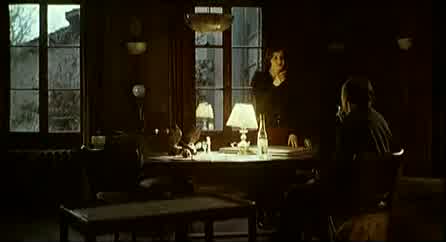Rendező:
Krzysztof KieslowskiOperatőr:
Piotr SobocińskiZeneszerző:
Zbigniew PreisnerSzereplők:
Irène Jacob, Jean-Louis Trintignant, Jean-Pierre Lorit, Samuel Le Bihan, Juliette Binoche, Julie Delpy, Zbigniew Zamachowski, Teco Celio (több)Streaming (1)
Tartalmak(1)
A Piros a trilógia befejező, és egyben szintetizáló része, melyben a rendező megtalálja az egyetlen megtalálható és kimondható végső választ. "A Piros hősnője fogoly, fotómodellként a konzumkultúrához, magánemberként egy kisszerű, szeretni sem képes, ám féltékenykedő fickóhoz láncolva. Megismerkedik egy bíróval, aki aktív korában legálisan, nyugdíjba vonultan illegálisan ítélkezik embertársai fölött. Az emberek rosszak - mondja. Nem, csak erőtlenek - válaszolja a lány, s a fogolyléten túlra mutatóan minden gesztusa, ellentétben az ítélkezőével, részvéttel teli. Kapcsolatuk az idegenségtől közelít a szeretet felé, mígnem a bíró följelenti magát, s egyszer csak álmodni is képes: boldog jövőt álmodik - nem magának - a lánynak." (Budapest Film)
(több)Recenziók (4)
Three Colors: Red is the most sympathetic and probably the best part of Kieslowski's color trilogy. Compared to the contrived White and the depressive Blue, it is filmed somewhat more lightly and functionally. The screenplay may lack the lightness and straightforwardness of Kieslowski's works from the 80s, so the viewer reaches the point, or rather the meaning of the whole story, more laboriously, but the actors manage to save the film quite a bit, especially Jean-Louis Trintignant, who gives his character, the judge, several dimensions, and it is a joy to watch his mature acting in every scene he appears in. It is a film about tolerance and the clash of different perspectives on life and the world around us. The director deliberately confronts the attitudes of an old embittered man, who as a judge has experienced much, with the optimism of a young, charming, and idealistic girl... Overall impression: 80%.
()
Lost in time. A film about weird people doing weird things and with weird ideas. A Polish non-sense touch licked with the French romantic debauchery of the nineties. A beautifully photographed Paris in a flick full of either weirdly bitter people or romantic dreamers. A film about life as not many people would want to live it. Nowadays this current of thought has no chance to succeed. A film that has aged in content by 50 years.
()
Saving the best for last. The story of the retired judge and the young model is damn riveting. What unites all the parts of the three-color trilogy are chance encounters and coincidences in general. There are even so many in Three Colors: Red that they could make three more films. While Valentina (Irene Jacob) only experiences coincidences, the judge (the great Jean-Louis Trintignant) creates them, so to speak. He listens to the phone calls of his neighbors, projects his own past into their stories, thinks about the future, and when coincidence (?) brings Valentina to him, Kieślowski weaves the threads of all the stories together so skillfully and with such feeling that it creates not an opaque and chaotic ball, but rather a tight rope, along which we, together with the judge and the model, reach the very end, where we are greeted by the last coincidence, but the greatest coincidence of all. My hat goes off to you, because I expected a lot of things from this (triple) venture, but certainly not such interesting, strong, entertaining, informative and thought-provoking films.__P.S. "If we are talking about fate, then I would note that chance, especially lucky chance, must be earned." Krzysztof Kieślowski
()
The last film Kieślowski directed is an example of how much of a great filmmaker he truly was, but also of how aware he was that he was creating something greater, interconnected, with his films. That is the beauty of his work, which can only be admired. And yet, he was able to contemplate humanity like no one else - accessibly and comprehensively.
()

